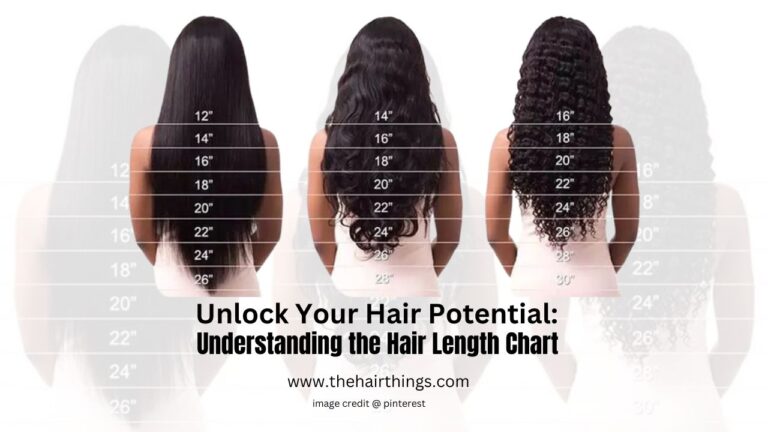Finding the perfect hair length can drastically alter your appearance. It’s crucial to determine your ideal hair length, whether you’re contemplating a dramatic cut, growing your hair out, or maintaining your current style. This guide will provide you with a step-by-step process to ensure you get it right.
Understanding Your Face Shape

Before we dive into measuring, it’s crucial to understand your face shape. Different face shapes harmonize better with specific hair lengths. For example, oval faces tend to be versatile and can pull off various lengths, while round faces may benefit from longer styles to add lengthening effects.
Measure Using a Tape

To measure the length of your hair, you can use a soft and flexible tape measure. Start at the center of your hairline, close to your forehead, and let the tape go down your back following the natural curve of your head. Ensure that the tape is straight to get precise measurements.
Tips:
- For precision, ask a friend or family member to help.
- Measure both the front and back for a comprehensive view.
The Ponytail Technique

This method is particularly useful for those with longer hair. To do this, gather your hair into a high ponytail at the crown of your head. Hold the ponytail base firmly, then measure from the hair tie to the ends. This technique provides an accurate assessment of your overall hair length.
Tips:
- Use a non-elastic band to prevent unnecessary tugging.
The Eyebrow-to-Tip Method

For a quick estimate, align one end of a ruler or tape measure with your eyebrow’s arch and extend it downwards. This will give you a rough indication of your hair’s length.
Tips:
- This method works best for shoulder-length hair or longer.
Considering Hair Type and Texture

It’s crucial to account for hair type and texture when measuring for length. Curly hair, for instance, can appear shorter when dry, so measure when it’s damp and let it air dry naturally for accuracy.
Conclusion

To attain your desired hairstyle, determining the perfect length of your hair is essential. You can make an informed decision about your hair length by understanding your face shape, using different measuring techniques, and considering your hair type and texture. Remember, it’s not just about the numbers; it’s also about feeling confident and comfortable with the look you have chosen. This tutorial provides instructions on how to achieve the ideal hair length that enhances your unique features and personal style.
Hair Length Measurement Chart

| Length Category | Measurement Range (in inches) |
|---|---|
| Very Short | 0 – 2 |
| Short | 2 – 6 |
| Shoulder Length | 6 – 12 |
| Medium Length | 12 – 18 |
| Long | 18 – 24 |
| Very Long | 24+ |
Based on measurements in inches, this chart offers a broad reference for various hair length categories. Just remember that everyone has different tastes and ways of interpreting hair length. Use this chart as a guide to help you decide on and convey the length of hair you want.
FAQs

1. How Often Should I Measure My Hair Length for Growth Progress?
Answer:
It’s recommended to measure your hair length every 2 to 3 months for accurate growth tracking. This interval allows for noticeable changes while accounting for normal growth variations.
2. Can Face Shape Influence the Ideal Hair Length?
Answer:
Yes, the most flattering hair length is greatly influenced by facial shape. People with round faces may benefit from longer styles for a lengthening impression, but people with oval faces can carry off a wide range of lengths.
3. What’s the Best Technique for Measuring Shorter Hair?
Answer:
For shorter hair, it’s best to use the Eyebrow-to-Tip method. Align a ruler or tape measure with your eyebrow’s arch and extend it downwards. This provides a quick estimate of your hair’s length, especially for styles above shoulder-length.
4. How Does Hair Type and Texture Affect Length Measurements?
Answer:
Hair type and texture are important factors to consider. Curly hair may appear shorter when dry, so it’s advised to measure when it’s damp. This ensures accurate measurements that account for any natural curling or waviness.
5. What Can I Do to Ensure Precise Ponytail Measurements?
Answer:
Use a non-elastic band to hold the ponytail in place to guarantee accurate measurements while utilizing the Ponytail Technique. This avoids pointless pulling and guarantees a precise measurement of your total hair length.









[…] Measuring Your Ideal Hair Length […]